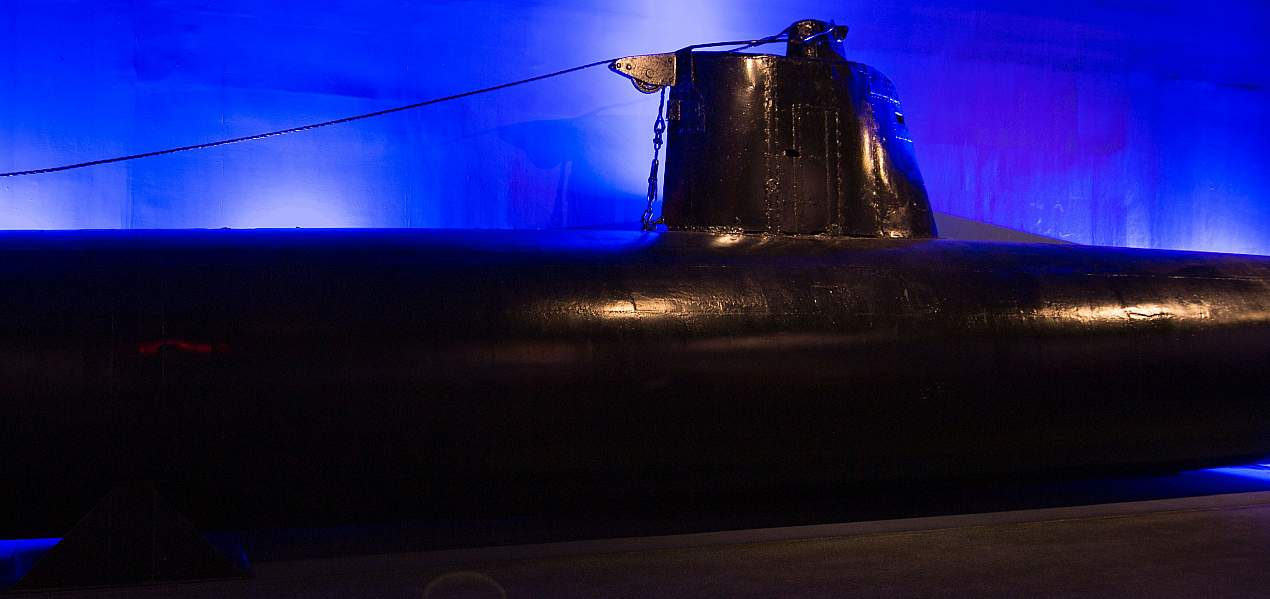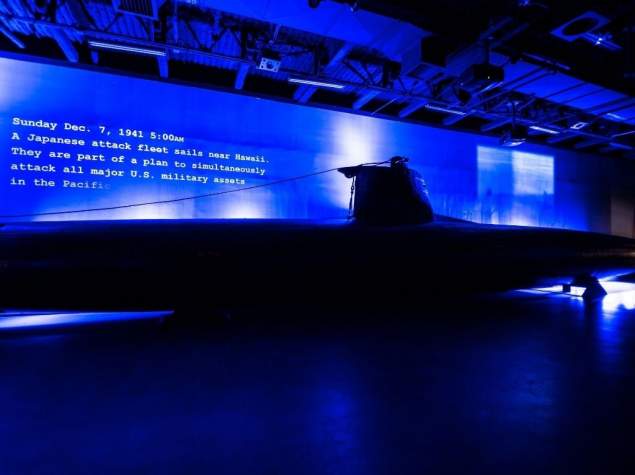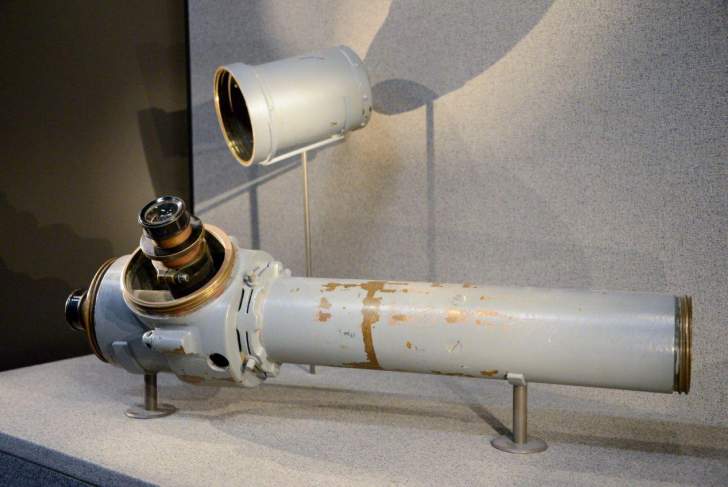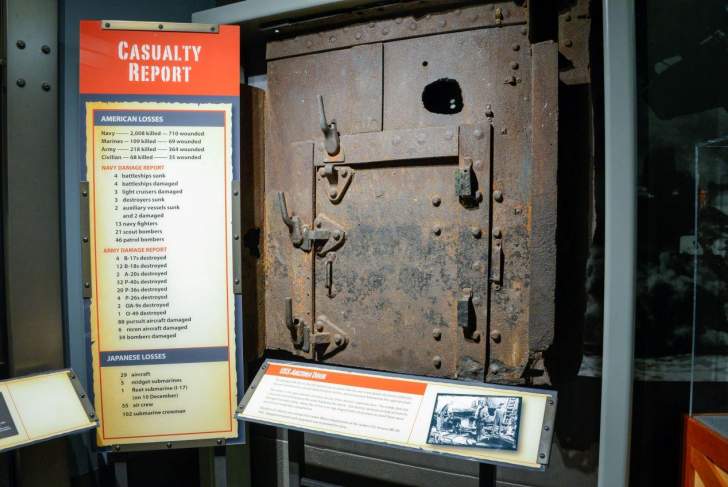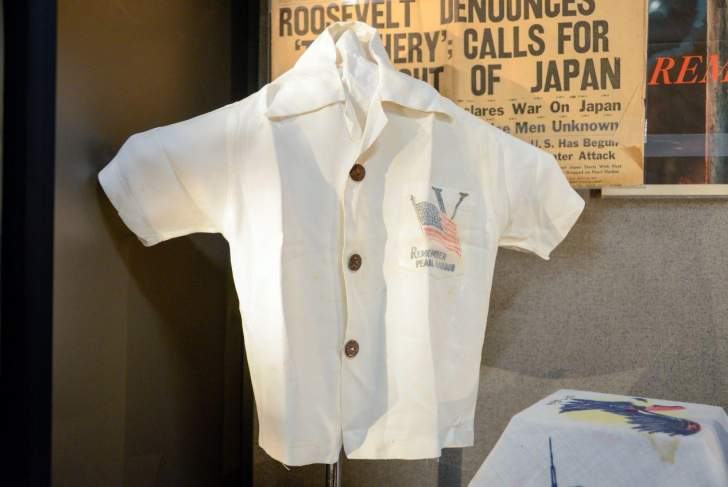This Japanese mini submarine, designated HA-19, was one of five subs used in the attack on Pearl Harbor. The subs were developed specifically for this attack, designed for stealth and a small crew compliment of only two men. It carried two torpedoes, and had a top speed of 19 knots when submerged, making it fast and efficient for the upcoming surprise attack. HA-19 ran aground outside the entrance to Pearl Harbor when its gyrocompass failed, and the crew was forced to abandon ship. One of the men died while attempting to make it to shore, and the sub’s pilot, Ensign Kazuo Sakamaki, became the first Japanese prisoner of war. HA-19 was salvaged and toured across the nation on bond tours, including a stop in Fredericksburg Texas. The museum obtained the submarine in 1991 and initially displayed it outside before moving it into the George H.W. Bush Gallery.
The Planning: HA-19
This section examines the planning and implementation of the Pearl Harbor attack, featuring an artifact used in the attack against Pearl Harbor.
Overview
With Japan’s continued violence in China, Americans worried about their growing aggression. They cut off oil exports, demanding that Japan withdraw its troops. The Japanese claimed they only wanted resources from China, such as oil and rice. Diplomats were sent to America to negotiate, but even during these talks, the Japanese started planning an attack against the US.
The Japanese knew that if they went to war with the US, they needed to knock out the American fleet at Pearl Harbor. As Japanese diplomats talked with American officials, they also gathered intelligence on the naval base. They made note of the low security and strict routine. A Japanese vessel sailed the potential route without seeing a single ship. The military created new weapons and a new type of submarine for the attack. These plans were made in secret, and America, still trying for peace, suspected nothing.

Map drawing of O'ahu, Hawaii and the planned attack of Pearl Harbor with routes drawn out and targets identified. From the collection of the National Museum of the Pacific War.
Japan gave the order on 5 November 1941 to launch the attack on Pearl Harbor. The fleet departed on 26 November, but the United States believed the targets would be the Philippines, Thailand, Malaya, or Borneo. It was too far, they thought, to make a direct attack on American soil.
HA-19
Artifact Details
Displacement:
46 tons
Beam:
6ft
Length:
78ft
Max. range at 4 knots:
Max. range at 4 knots: 100 miles
Exhibit Preview
Pearl Harbor Exhibit
This exhibit tells the story of the attack on Pearl Harbor and how it brought our nation into the war.

